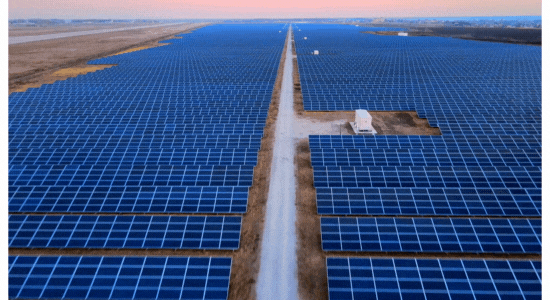The renewables industry is in the grip of a supply chain crisis, which means sourcing components for solar farms is increasingly difficult. Solar industry supply chain disruption means sourcing replacement components is extremely challenging – consequently, protecting existing assets from damage, including fire, is crucial. What’s causing the problems? Shipping delays, worker shortages due to Covid-19, and rising commodity prices have all contributed to higher solar costs and constrained supplies.
Global Supply Chains are a Mess

The problems have been made worse by the US Department of Commerce’s ongoing investigation into imports of solar panels assembled in Southeast Asia.
The investigation was launched amid allegations that panels being assembled in Cambodia, Malaysia, Thailand, and Vietnam are circumventing duties aimed at limiting imports of solar cells and panels from China. The effect of the investigation was that purchasers of components from companies in the affected countries suffered delayed shipments, with some suppliers even deciding to halt shipments altogether.
Such was the disruption that US President Joe Biden recently declared a 24-month tariff exemption for solar panel products from Cambodia, Malaysia, Thailand, and Vietnam. Despite the tariff exemption, solar supply chains are in a dire situation. The Ultra Low-Carbon Solar Alliance summed up the situation by saying that “global supply chains are a mess.”
What Exactly are the Supply Chain Problems Facing the Solar Industry?
In the solar sector, there are three major supply chain issues impacting companies:- A Lack of Essential Commodities
.png?width=130&name=polysilicon%20(1).png)
Increased demand for certain commodities has led to soaring raw material prices due to a lack of supply – this has been attributed to the lingering effect of Covid-19. Most notably, a shortage of polysilicon, which is a vital component in the photovoltaic supply chain, has resulted in solar prices rocketing due to a spike in demand for solar cells. Other components used in the manufacture of PV cells such as silver, copper, aluminum, and glass, have also been subject to price inflation as demand outstrips supply. - Supply Chain Bottlenecks
Commodity shortages are exacerbated by global supply chain constraints caused by higher shipping costs, factory closures, trade actions and import tariffs. These supply chain constraints have had a crippling affect on planned solar projects in the US, and around the world. Analysts at consultancy Rystad Energy estimate that rising shipping and equipment costs could result in 56% of worldwide utility-scale solar projects planned for 2022 being postponed or cancelled. - Shortage of Labor
The solar industry is suffering from a skilled labor shortage caused by the Covid-19 pandemic. In 2021, trucking companies in the US recorded a record deficit of 80,000 drivers. Meanwhile, solar industry construction contractors are struggling to hire enough skilled labor to work on solar projects.
Why We Must Do All We Can to Protect Existing Solar Assets
The lack of availability of solar components, as well as the rising cost of shipping them due to supply chain blockages means any damage sustained by a solar farm could have a significant impact on its financial viability.
Consequently, solar panel farm operators must do everything possible to protect their existing assets to ensure they don’t face the challenge of having to source replacement components if a solar system is damaged. This includes protecting your solar assets against fire risk.
Studies have shown the risk of fires at solar farms is potentially being underestimated due to under-reporting and a lack of available data. A study by the UK’s BRE National Solar Centre led to the finding that researchers “strongly suspect a degree of under-reporting, especially amongst solar farms and domestic thermal events that were resolved by a solar installer/maintenance engineer.”

How to Reduce the Risk of Solar Fires
A study conducted by European testing and certification company TÜV Rheinland, which has been cited by the US Department of Energy’s Solar Energy Technologies Office, made a number or recommendations for minimizing the risk of solar fires.
They include:
- Ensure solar systems are regularly tested by independent third parties
- Incorporate additional safety components
- Create standardized quality assurance measures
- Ensure defective or prematurely aged components are promptly replaced
In addition, it is also recommended that solar farm operators address the issue of fire risk by incorporating fire suppression systems and fire risk assessments.
If you are unsure about the level of fire risk you may face at your solar farm, download our latest report: Solar Farm Fire Risk Could Be Greater Than You Think.

